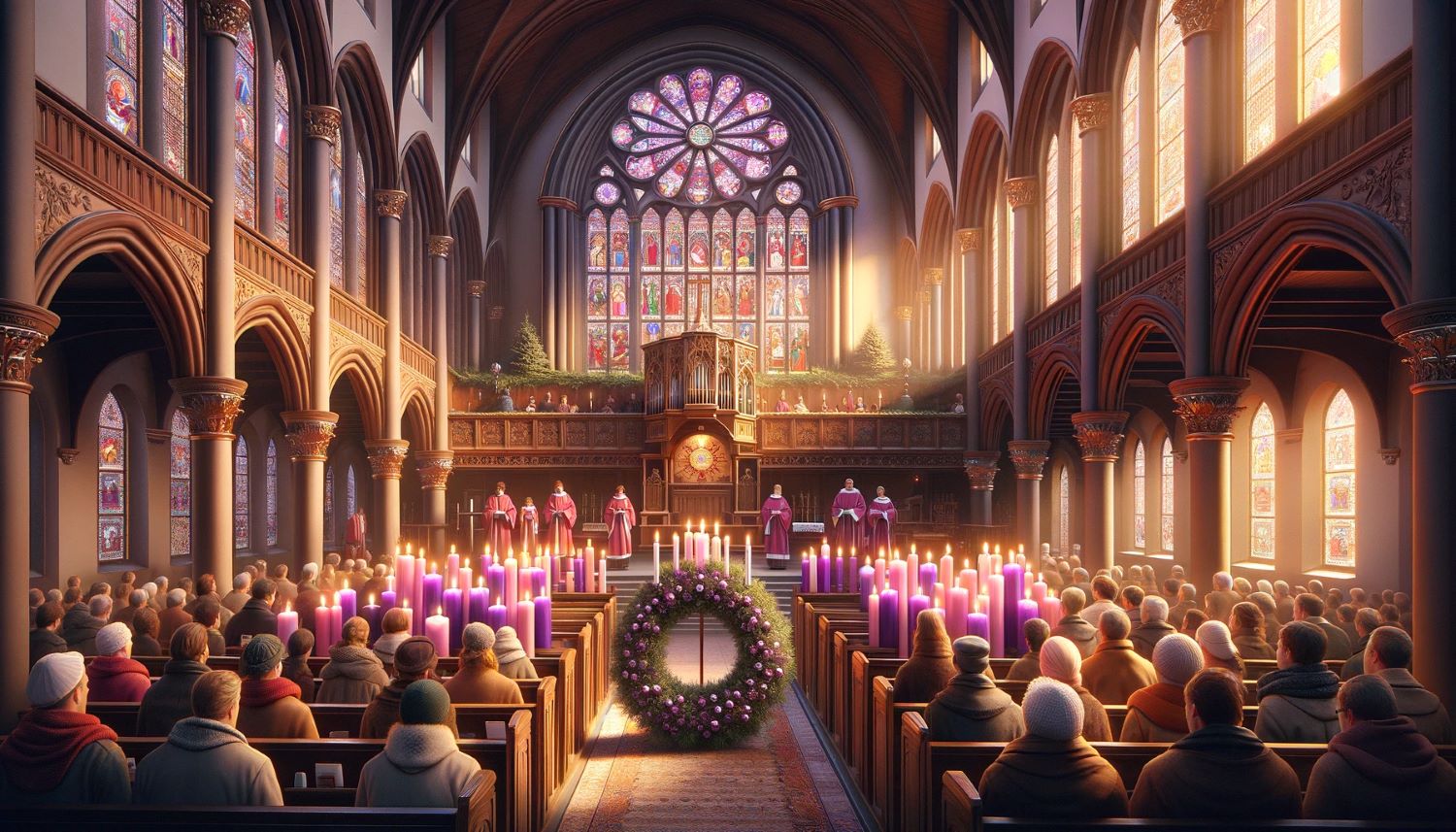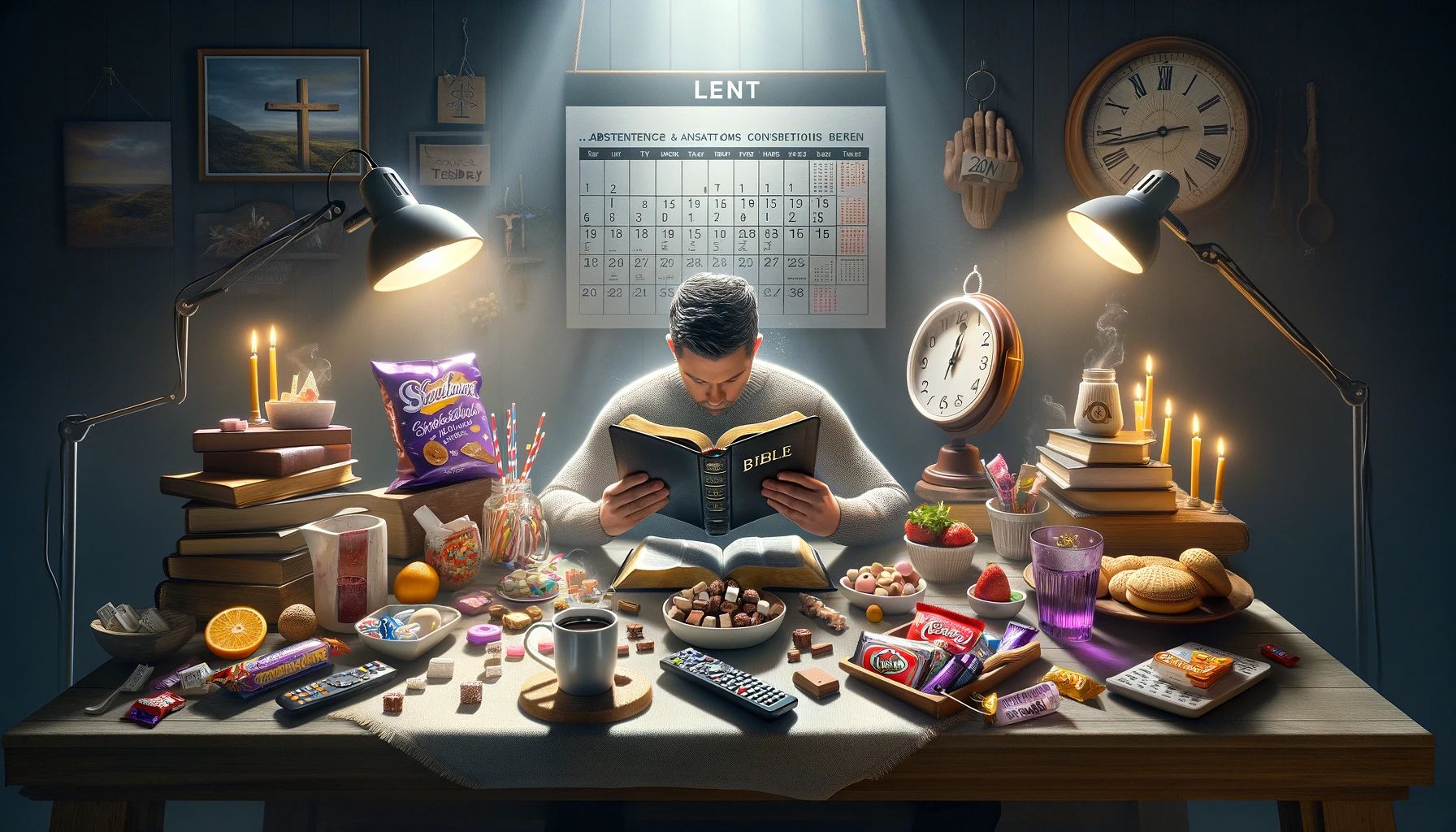Home>Special Themes>What Is The Last Sunday Before Lent Called


Special Themes
What Is The Last Sunday Before Lent Called
Published: February 27, 2024
Peter Smith, Editorial Director at Christian.net, combines deep insights into faith, politics, and culture to lead content creation that resonates widely. Awarded for his contributions to religious discourse, he previously headed a major organization for religious communicators, enhancing dialogue on faith's societal impacts.
Discover the significance of the last Sunday before Lent, also known as "Quinquagesima Sunday," and its special themes in Christian tradition. Explore the history and customs associated with this important day.
(Many of the links in this article redirect to a specific reviewed product. Your purchase of these products through affiliate links helps to generate commission for Christian.net, at no extra cost. Learn more)
Table of Contents
Introduction
The last Sunday before Lent is known by different names in various Christian traditions. This special day marks the transition from the joyful celebrations of Epiphany and the Christmas season to the reflective and penitential period of Lent. Many people wonder, "What is the last Sunday before Lent called?" In this article, we will explore the history, traditions, and significance of this important day in the Christian calendar. Whether you know it as Shrove Sunday, Quinquagesima Sunday, or something else, the last Sunday before Lent holds a significant place in the hearts of many believers around the world.
Read more: What Is The Fourth Sunday Of Lent Called?
The History of the Last Sunday Before Lent
The last Sunday before Lent has a rich historical background that dates back to the early centuries of Christianity. This day is closely linked to the observance of Lent, a period of fasting and reflection leading up to Easter. The name "Quinquagesima Sunday" comes from the Latin word for "fiftieth," as it is roughly fifty days before Easter. In some traditions, this Sunday is also known as "Shrove Sunday," with the word "shrove" derived from the old English word "shrive," meaning to confess one's sins and receive absolution. This practice of confession and absolution was an important part of preparing for the Lenten season.
The last Sunday before Lent also marks the end of the pre-Lenten season, which includes other significant observances such as Septuagesima Sunday and Sexagesima Sunday. These Sundays, along with Quinquagesima Sunday, serve as a bridge between the joyous celebrations of Christmas and Epiphany and the solemn period of Lent. The pre-Lenten season was historically a time of preparation, both spiritually and practically, as people made ready for the disciplines of Lent.
In some cultures, the last Sunday before Lent is associated with various customs and festivities. For example, in many countries, it is a time for indulging in rich foods and merry-making before the austerity of Lent begins. This tradition is reflected in the practice of using up rich ingredients such as eggs, milk, and sugar in preparation for the fasting period. The history of the last Sunday before Lent is a tapestry woven with threads of spiritual significance, cultural traditions, and the rhythms of the Christian liturgical year.
Traditions and Celebrations
-
Pancake Day: In many parts of the world, the last Sunday before Lent is celebrated as Pancake Day or Shrove Tuesday. This tradition stems from the practice of using up rich foods before the Lenten fast. Families and communities gather to enjoy feasts of pancakes, waffles, and other treats made from ingredients such as eggs, milk, and sugar. The act of consuming these indulgent foods symbolizes a final opportunity for enjoyment before the solemnity of Lent.
-
Carnival: The last Sunday before Lent is also associated with colorful and lively carnival celebrations in many cultures. These festivities feature parades, masquerade balls, music, dance, and elaborate costumes. Carnival, which means "farewell to meat," is a time for revelry and merrymaking before the period of fasting and abstinence. It is a joyous occasion that allows people to express themselves through creativity and communal celebration.
-
Burning of the Palms: In some Christian traditions, the last Sunday before Lent includes the custom of burning the palm branches from the previous year's Palm Sunday. This ritual is a symbolic way of preparing for the upcoming season of Lent. The ashes from the burned palms are then used in the Ash Wednesday service, where they are applied to the foreheads of worshippers as a sign of repentance and mortality.
-
Farewell to Alleluia: In some churches, the last Sunday before Lent is an opportunity to bid farewell to the joyful proclamation of "Alleluia." This practice reflects the transition from the exuberant celebrations of the Christmas season to the more introspective and penitential tone of Lent. The hymns and liturgy on this Sunday often emphasize the themes of repentance, forgiveness, and the impending journey through the Lenten wilderness.
-
Charitable Acts: As a precursor to the Lenten season, the last Sunday before Lent is also a time for acts of charity and service. Many churches and communities organize outreach programs, food drives, and volunteer activities to help those in need. This emphasis on compassion and generosity reflects the spirit of self-examination and renewal that characterizes the Lenten journey.
The traditions and celebrations associated with the last Sunday before Lent vary widely across different cultures and Christian denominations. However, they all share a common thread of preparing hearts and minds for the solemn and transformative season of Lent.
The Significance of the Last Sunday Before Lent
The last Sunday before Lent holds profound significance in the Christian calendar, serving as a pivotal moment that marks the transition from the joyful festivities of the Christmas season to the introspective and penitential period of Lent. This day provides an opportunity for believers to reflect on the themes of repentance, forgiveness, and spiritual renewal as they prepare to embark on the Lenten journey. The significance of the last Sunday before Lent can be understood through several key aspects:
1. Preparation for Lent
The last Sunday before Lent serves as a time of spiritual preparation for the disciplines of the upcoming season. It offers a moment for introspection, self-examination, and the confession of sins, as individuals and communities seek to enter into the Lenten period with hearts and minds focused on repentance and renewal.
Read more: What Are The 4 Sundays Of Advent Called?
2. Emphasis on Absolution
In many Christian traditions, the last Sunday before Lent is associated with the practice of confession and absolution. This emphasis on seeking forgiveness and reconciliation underscores the importance of spiritual readiness for the Lenten journey. The act of receiving absolution on this day symbolizes a fresh start and a commitment to spiritual growth.
3. Transition from Joy to Solemnity
The last Sunday before Lent represents a shift in the liturgical tone from the exuberant celebrations of Epiphany and the Christmas season to the more somber and reflective atmosphere of Lent. It serves as a reminder of the cyclical nature of the Christian calendar, guiding believers through seasons of rejoicing, penitence, and ultimately, the celebration of Easter.
4. Communal Reflection and Renewal
This special Sunday provides an opportunity for communal reflection and renewal within the faith community. It is a time for congregations to come together in worship, prayer, and fellowship, as they collectively prepare to embark on the Lenten journey. The shared experience of acknowledging the need for repentance and the pursuit of spiritual growth fosters a sense of unity and common purpose among believers.
5. Anticipation of Easter
The last Sunday before Lent also serves as a prelude to the anticipation of Easter, the central event of the Christian faith. By engaging in acts of confession, reconciliation, and spiritual preparation, believers set the stage for a meaningful observance of the Lenten season, leading ultimately to the joyous celebration of Christ's resurrection.
In summary, the last Sunday before Lent holds deep significance as a time of spiritual preparation, absolution, transition, communal reflection, and anticipation within the Christian tradition. It serves as a vital bridge between the seasons of celebration and penitence, guiding believers on a transformative journey toward Easter.
Read more: What Is Third Sunday Of Advent Called
Similar Observances Around the World
-
Mardi Gras in New Orleans, USA: The vibrant and extravagant Mardi Gras celebrations in New Orleans, Louisiana, are synonymous with the last Sunday before Lent. This annual event features parades, masquerade balls, and lively street parties, drawing visitors from around the world to partake in the revelry before the onset of Lent.
-
Carnival in Rio de Janeiro, Brazil: Rio de Janeiro's Carnival is a world-renowned spectacle that takes place in the days leading up to Lent. The city comes alive with samba music, elaborate costumes, and dazzling parades, as locals and tourists alike join in the festivities to bid farewell to indulgence before the solemn season of Lent.
-
Venice Carnival, Italy: The Venice Carnival, known for its opulent masks and elaborate costumes, is a time-honored tradition that culminates on Shrove Tuesday. The city's streets and canals become a stage for grand processions and masquerade balls, creating a magical atmosphere as participants revel in the spirit of the pre-Lenten celebrations.
-
Pancake Day in the United Kingdom: In the United Kingdom, Pancake Day, or Shrove Tuesday, is a beloved tradition that coincides with the last Sunday before Lent. Families gather to enjoy stacks of pancakes, engaging in friendly pancake-flipping competitions and savoring the indulgent treats before the fasting period begins.
-
Karneval in Germany: The German celebration of Karneval, particularly in regions such as Cologne and Düsseldorf, is a festive affair that precedes the start of Lent. Colorful parades, costume balls, and street festivities characterize this lively event, offering a joyful farewell to merriment before the solemn observance of Lent.
-
Carnaval de Barranquilla, Colombia: The Carnaval de Barranquilla is one of the largest and most colorful carnivals in the world, attracting revelers to the streets of Barranquilla to partake in the exuberant festivities before the onset of Lent. The carnival features traditional music, dance, and elaborate costumes, showcasing the rich cultural heritage of the region.
-
Fasnacht in Switzerland: Fasnacht, the Swiss pre-Lenten carnival, is celebrated with parades, masked processions, and vibrant street performances. The festivities, which vary across different Swiss cantons, offer a spirited farewell to winter and a joyous prelude to the Lenten season.
-
Carnaval de Nice, France: The Carnaval de Nice is a dazzling extravaganza that unfolds in the days leading up to Lent, featuring elaborate floats, flower battles, and costumed parades. The city becomes a kaleidoscope of color and creativity as locals and visitors come together to revel in the festive atmosphere.
These similar observances around the world demonstrate the universal embrace of pre-Lenten celebrations, each with its own unique cultural expressions and traditions. Whether through vibrant parades, elaborate costumes, or indulgent feasts, people across the globe unite in bidding farewell to merriment and ushering in the solemn season of Lent.
Conclusion
In conclusion, the last Sunday before Lent, known by various names such as Quinquagesima Sunday or Shrove Sunday, holds a significant place in the Christian calendar. Its historical roots, traditions, and celebrations reflect the transition from the joyous festivities of the Christmas season to the solemn and reflective period of Lent. The significance of this special Sunday lies in its role as a time of spiritual preparation, absolution, transition, communal reflection, and anticipation within the Christian tradition. As observed in similar celebrations around the world, the last Sunday before Lent serves as a universal moment for bidding farewell to indulgence and embracing the forthcoming season of penitence and renewal. Whether through the exuberant carnival parades of Rio de Janeiro, the colorful masquerade balls of Venice, or the cherished pancake-flipping competitions of the United Kingdom, people across diverse cultures unite in commemorating this pivotal moment in the liturgical year. The last Sunday before Lent stands as a bridge between the seasons of celebration and penitence, guiding believers on a transformative journey toward Easter.













